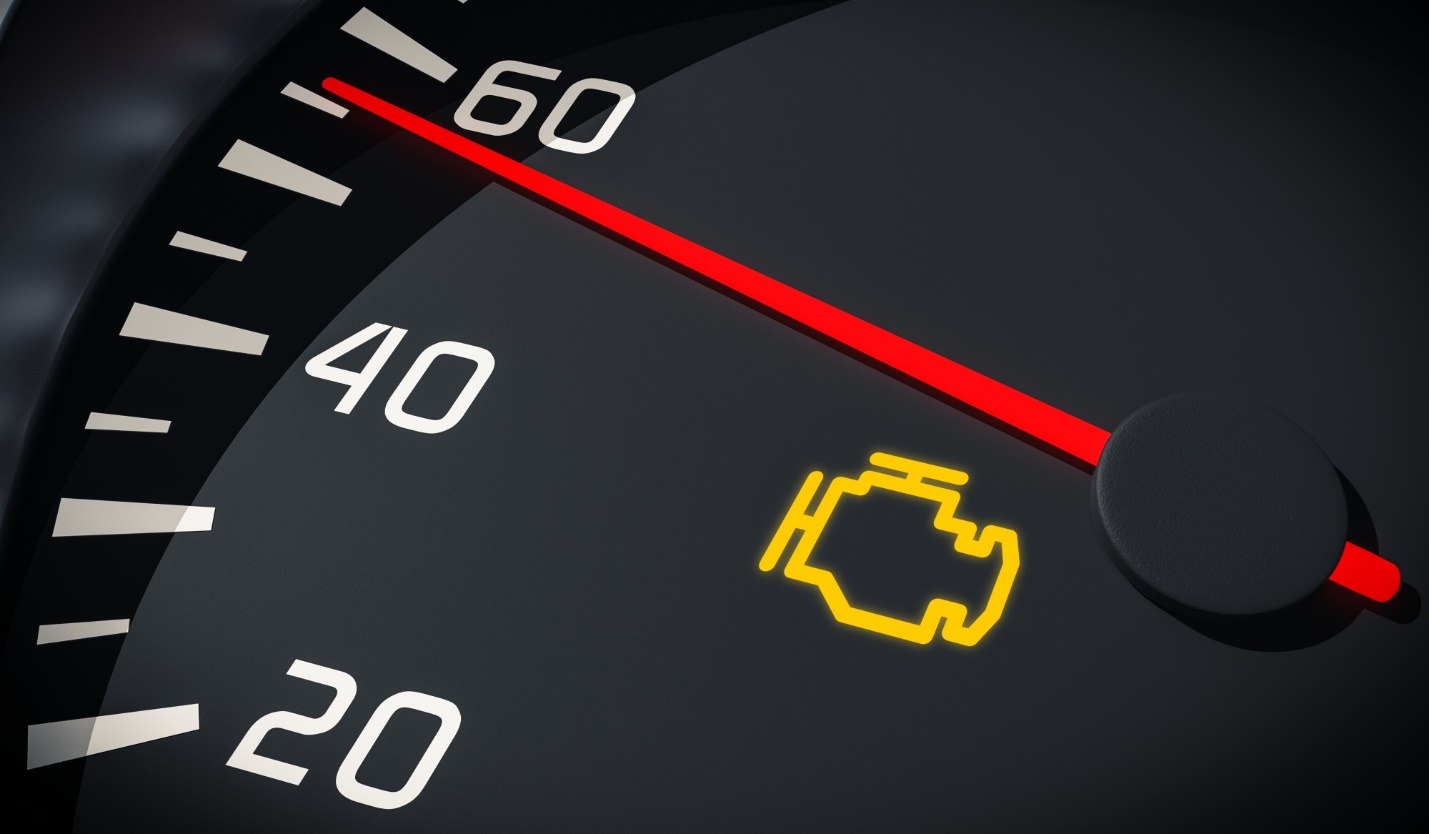
What Do I Do About Dash Warning Lights?
Red lights, yellow lights, green lights oh my! Is your dash light up with funny little symbols? Do you know what they mean and what to do about them when they come on? Vehicle manufacturers have primarily gone to symbols to bring your attention to potential problem areas and to communicate information in a universal way. There are some differences between manufacturer to manufacturer. Let’s explore what the lights mean and what to do when they come on.
Color of the symbols
The color of the symbols quickly communicates urgency. Solid on lights or flashing lights also communicate a level of urgency.
RED - Red lights indicate the highest priority areas of concern. They identify systems that could leave you stranded on the side of the road or for major safety concerns. Do not ignore red warning lights! Contact your trusted service provider and have red lights looked at right away. Do not drive the vehicle until after you have it inspected by a qualified Service Technician.
YELLOW/AMBER - Solid yellow/amber warning lights indicate identified problem areas that need to be inspected but may not pose an immediate problem. Like a check engine light or tire pressure light. Yes, you should still take the time to look and see if there is an immediate problem, but you should be safe to drive the vehicle until you can get it properly inspected. The exception is a flashing CEL (Check Engine Light). A flashing CEL indicates that eminent catalytic converter damage is likely to occur if you continue to drive the vehicle. If the CEL is flashing, do not drive the vehicle and have it inspected right away.
GREEN OR BLUE - Green or blue lights are informational and indicate that a system is active or in use. Often you will see green for cruise control indication and blue for high beam headlights.
WHITE - White lights also serve as information indicators. Many times, white lights are used with certain driver-assistance programs are active or turned on.

TPMS (Tire Pressure Monitoring System) - One of the more common lights to come on. If the light is on solid it means that the system has identified one or more tires that are losing air. Check your tire pressures and fill to the pressure stated on the driver’s side door placard. Make note of which tire is low, and have your tire repaired at your local trusted service provider. If the TPMS light is flashing, then the system has identified that one or more of the TPMS tire sensors are not producing a signal. The life span of TPMS sensor batteries is 6-10 years. We recommend replacing the sensors when installing new tires.

CEL (Check Engine Light) - In older vehicles it may also light up with SES (Service Engine Soon). This symbol is supposed to look like a small engine, with the fan in the front and the air cleaner housing on top. A CEL will illuminate when the PCM (Powertrain Control Module) identifies a problem that will cause the emissions output of the vehicle to exceed government standards. It can be turned on for hundreds of different reasons. Most people think that the PCM trouble code associated with the light will tell them what is wrong with their vehicle. The truth is that it simply gives the Service Technician an idea where to begin testing. Bring the vehicle to your local trusted service provider and have it tested to determine the source of the problem and have it repaired promptly. Ignoring the CEL can lead to costly vehicle repairs. It can even leave you with a vehicle that is undriveable. If the CEL is on steady, you can drive the vehicle temporarily until you can get it into the shop. If it is flashing, do not drive the vehicle and have it tested right away!

Oil Pressure - This little red oil can alerts you to an oil pressure problem with your engine. Oil pressure, not oil level! Oil is absolutely essential to the life of your engine. It must have the correct oil, at the correct fill level, circulated by the oil pump throughout the engine to protect the engine from metal-on-metal contact. The thin film of oil on the internal moving parts of the engine is the only thing protecting it from complete failure. This red light alerts the driver to a low oil pressure problem. Yes, it can be brought upon by low oil level, but if you wait for this light to come on to add oil, then you are greatly reducing the service life of your engine. DO NOT run your engine when this light is on!

Battery - When the battery light comes on it indicates that the system voltage is low. Normal operating voltage for most vehicles is 14.3-14.9 volts. When the PCM or BCM(Body Control Module) sees the system voltage drop below desired levels, it will illuminate the battery light. Indicating that you will have limited range before the engine stops running, leaving you stranded. Modern vehicles require a lot of power to operate all the vehicle systems. Should your charging system fail, your vehicle will operate on battery power alone. Get your vehicle to the shop and inspected as soon as possible.

Brake - The brake warning light comes in a few varieties and can warn you about several different concerns. The most common reason for the brake light is when the parking brake is on. This warns the driver to release the parking brake before driving the vehicle. If you see this light on, check the parking brake first. The next common reason for the brake light is when the brake fluid level is low, due to a leak or worn brake parts. If there is a leak, you may notice a puddle on the ground, or the brake pedal may not feel normal. Sometimes, the brake light will turn on when there is a problem with the ABS (Anti-lock Brake System) or Traction Control systems. In any case, the red brake light needs to be addressed when it comes on. Have your local trusted service provider look at it right away.

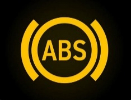

Traction Control, ABS (Anti-lock Brake System), ESP (Electronic Stability Program), or BAS (Brake Assist System) - All of these systems are based on an expanded function of the ABS system and use many of the same components. Traction control/ESP is used when accelerating, and ABS/BAS is used when braking. The ABS or ESP/BAS light will come on when the system detects a problem with any of the components in the system. When the light is ON, the ABS and traction control systems or ESP/BAS systems are turned OFF. Your brakes will function normally to stop the vehicle, you just won’t have ABS to aid in stopping control nor traction control when accelerating. When a problem is detected with either system you may see one light, two lights, or three lights (Brake, ABS, and traction control) depending on the vehicle manufacturer. The traction control light will also come on if you press the traction control button, indicating that the system is disabled or turned off. You may also see the traction control light flashing when you’re accelerating. Indicating that the tires are slipping, and traction control is active. The traction control system can pull power from the engine and alternately apply the brakes to control tire slip and allow you to accelerate. It is safe to drive the vehicle with these lights on steady but be very wary when the roads are slippery or wet as it will affect your stopping control. It is better to have these systems inspected and repaired right away if the light comes on.
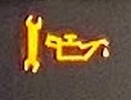
Maintenance Reminder - This little guy can come in different shapes and designs. It may be a yellow wrench symbol of some kind or a reminder that flashes on your infotainment system. No matter what the symbol, it’s your vehicle’s way of telling you that some kind of maintenance is due. Sometimes they are mileage-based reminders, often they are based on a computer algorithm that considers many different operating factors. Usually, it signifies that you are due for an engine oil change. Many people wait for this light to come on before changing their oil. I do not recommend this practice because our operating environment here in Minnesota is hard on your vehicle systems. More regular service intervals are highly recommended to maximize the service life of your vehicle. Your maintenance reminder light should be reset when your vehicle is serviced.
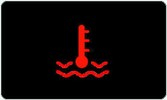
Coolant Temperature - The coolant temperature warning light, which looks like a thermometer in water, is used to alert you to a problem with the engine temperature. Sometimes you may see this symbol in blue, which indicates that the engine has not reached operating temperature yet. If you see the blue symbol just drive your car easy until it is warmed up. If you see this symbol in red, it indicates that your engine has exceeded the safe operating temperature. Pull over and shut your engine off. Serious engine damage can occur should you continue to drive your vehicle with the red coolant temperature light on. Have your vehicle towed to a qualified service repair center.

Airbag - The air bag warning light will illuminate when the system detects a problem with the SRS (Supplemental Restraint System). Modern vehicles may have airbags in the dash and along the sides of the inside of the vehicle. This light will turn on when there is a problem with any of the airbags or seat belt tensioners. If the light is on, the system will turn off the airbag(s) causing the problem. To protect the safety of you and your passengers, have airbag lights inspected and repaired promptly.

Seat Belt - This one is straight forward. If the light is on, put your seat belt on! It’s the safe thing to do.

Low Fuel - Another simple one that usually comes on when your fuel level is below 10%. I recommend always keeping your fuel level above ¼ tank. The fuel in your tank cools the intake fuel pump. Running your vehicle low on fuel regularly can reduce the life of your fuel pump and create a dangerous, but preventable situation should you run out of gas.

Transmission Temperature - Looks like a gear with a thermometer. They can be red or yellow in color. This warning light is to alert you to an over-temperature condition detected in the transmission fluid. Usually, the conditions needed to create this issue are heavy towing or steep road grades. Automatic transmissions require transmission fluid to operate properly. High operating temperatures degrade the fluid and reduce the life of your transmission. If this light comes on, slow down and/or pull over. Shift the vehicle transmission into neutral, engage your parking brake, and allow the engine to idle. Allow time for the transmission to cool off. When you resume your travels, take it easy. Should this light illuminate, I recommend having the fluid in your transmission exchanged at your next vehicle service.

Power Steering - This warning light is to alert you to a problem with the steering assist system. Normally found on vehicles with electric assist power steering. Should the light come on, you will likely experience hard steering. Pull over and shut your vehicle down. Wait a few minutes and restart. Many times, this will reset the system, and you can continue your travels. Once you arrive home, make an appointment to have your vehicle looked at by a qualified automotive repair facility.

Glow Plug - Found on diesel vehicles, the glow plug warning light or wait to start light is to alert the driver that the glow plug system is active. Wait until the light goes off before starting the vehicle.

Fog Light - Fog light indicator can be green or yellow/amber in color. Alerts the driver that the fog lights are on.

High Beam - High beam indicator is blue in color and alerts the driver to when the high beam headlights are on.
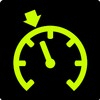
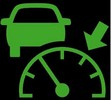
Cruise Control and Adaptive Cruise Control - Green in color, the cruise control indicator lights up when cruise control is on or active, depending on the make and model. Shaped like a speedometer gauge with an arrow. Adaptive cruise control, the symbol with the car, lets the driver know that the system is active and will adjust speeds to match the vehicle in front of the car using radar.
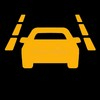
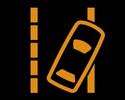
Lane Keeping / Lane Departure - Can be green, yellow/amber, or red in color. Green tells the driver that the system is active. Flashing yellow tells the driver when they are deviating from their lane, and red alerts the driver to a problem with the lane keeping system.
As you can see, there are many symbols that the driver should be aware of and know how to handle them if they come on. Not sure what indicator light your vehicle is equipped with? Most vehicle dashes perform a bulb check when the vehicle is first started. Pay attention next time you start your vehicle. Consult your owner’s manual for more information about your specific vehicle. It is important to know what to do should warning lights illuminate while you’re driving. Having those systems inspected and repaired promptly will keep you and your family safe. Have fun out there and enjoy the drive!
Aaron Bjorklund